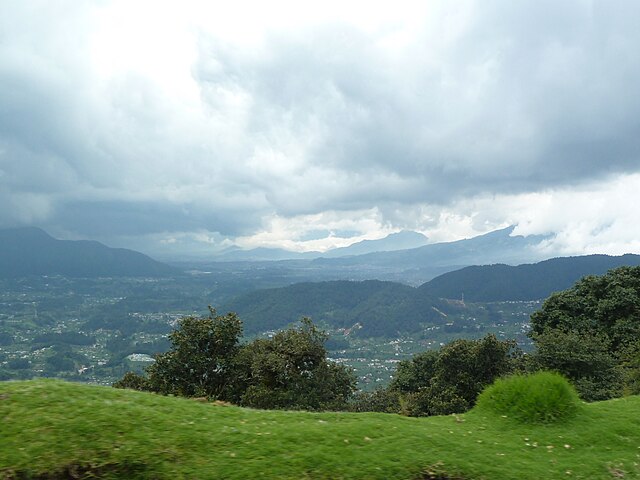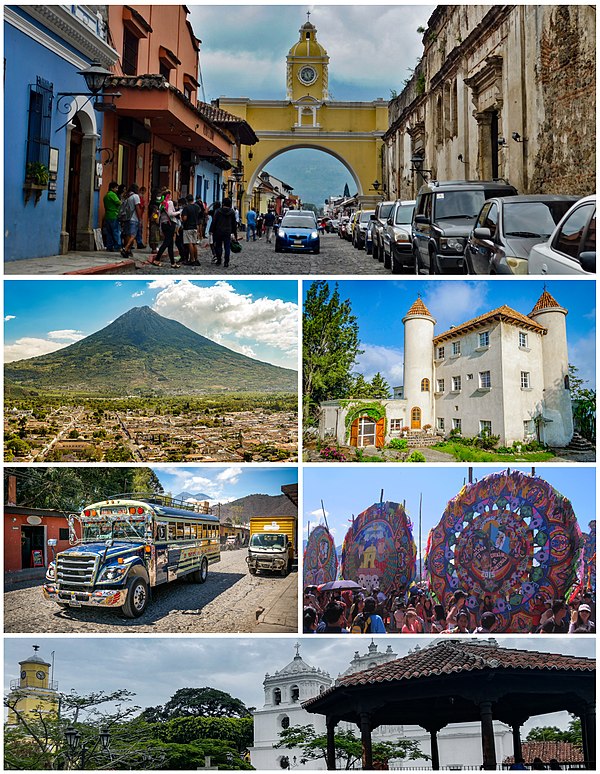Top Qs
Timeline
Chat
Perspective
Sacatepéquez Department
Department of Guatemala From Wikipedia, the free encyclopedia
Remove ads
Sacatepéquez (Spanish pronunciation: [sa.ka.teˈpe.kes]) is one of the 22 departments of Guatemala. The name comes from Sacatepéquez, a city from November 21, 1542, until July 29, 1773, when it was destroyed by the 1773 Guatemala earthquake.
You can help expand this article with text translated from the corresponding article in Spanish. (January 2023) Click [show] for important translation instructions.
|
The capital of the department is Antigua Guatemala. Other important cities include Ciudad Vieja and San Lucas Sacatepéquez, which also hosts a marketplace and is a culinary attraction. The Chajoma were a group of indigenous people who were Kaqchikel speaking Maya, they identified Mixco Viejo as their capital, and spread throughout the Sacatepequez Department until their capital was moved to Ciudad Vieja, in Antigua.
Remove ads
Name

The name Sacatepéquez is derived from a Nahuatl word which means "grasshill", referring to the hilly terrain in the department. It has also been spelled Zacatepeques.[2]
Population
Sacatepéquez Department has a population of 330,469 (2018 census).[1] 40.2% of the population identifies as Maya, with 37.7% belonging to the Kaqchikel Maya.[3] In 1850, the area had a population of an estimated 56,000. The southern area, which is closer to Guatemala City, has the largest population.[4]
Municipalities
Geography
The area is mountainous, with what the British described, in 1850, as a "mild climate."[2] Guatemala hosts a chain of active and dormant volcanoes, with those in Sacatepequez including Acatenago, Volcan De Agua (Volcano of Water), and Volcan de Fuego (Volcano of Fire).[6] Jocotes, a fruit of the cashew family, grow in the region.[7]
Economy
The more populated areas produce fruit and various crops, including maize. Livestock is also raised, with trade going towards Guatemala City. The southern area of the department produces coffee, sugar, tobacco, and cotton. As of 1850, products were being shipped out of Iztapa.[4] Although Guatemala is able to produce cash crops such as bananas and textiles, 72% of people living in rural areas live in poverty with 31% of them reaching extreme poverty.[8]
Remove ads
Culture
Art
Sacatepéquez is also home to the National Museum of Guatemalan Art, which is located in Antigua Guatemala.[9][10]
See also
References
External links
Wikiwand - on
Seamless Wikipedia browsing. On steroids.
Remove ads




